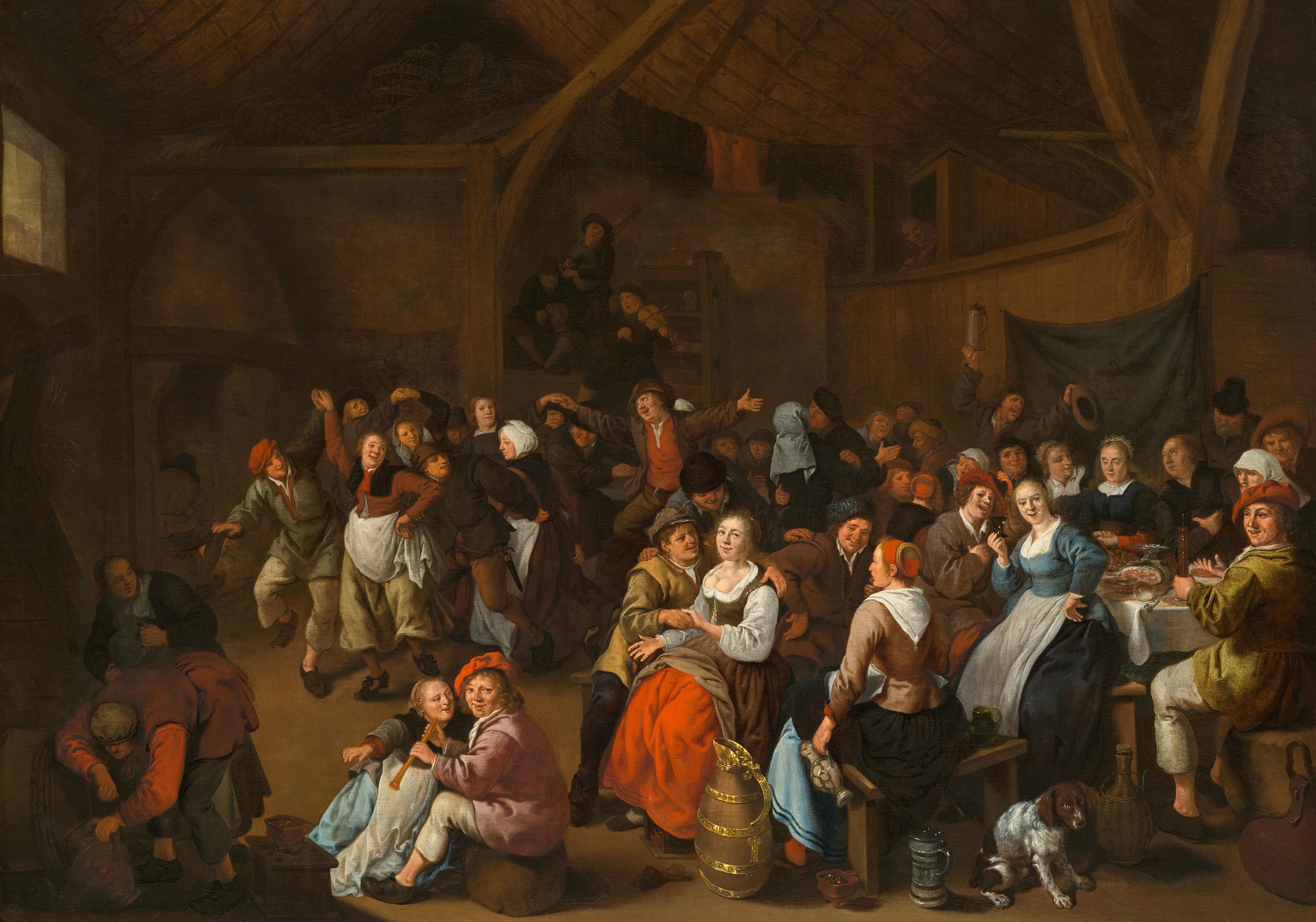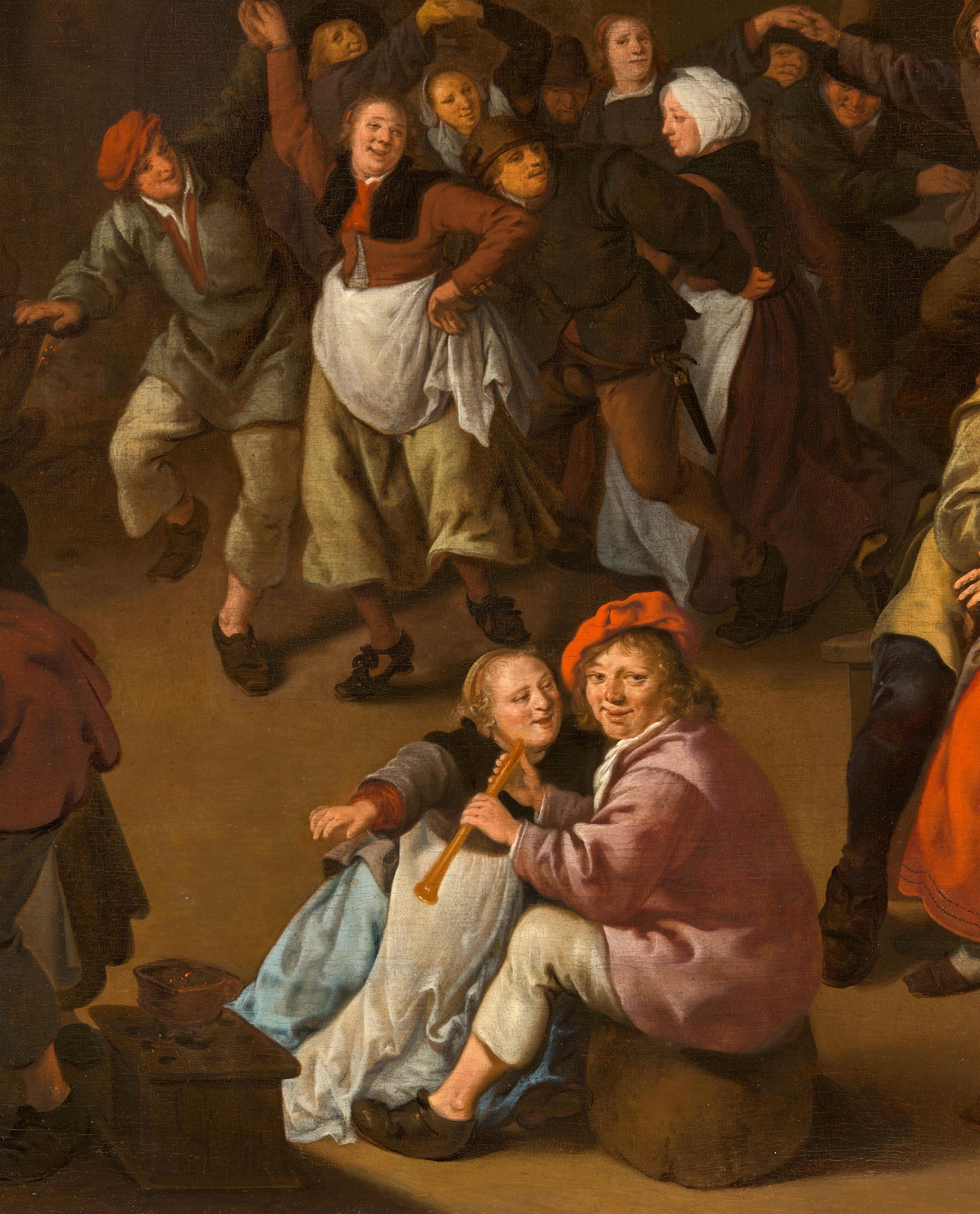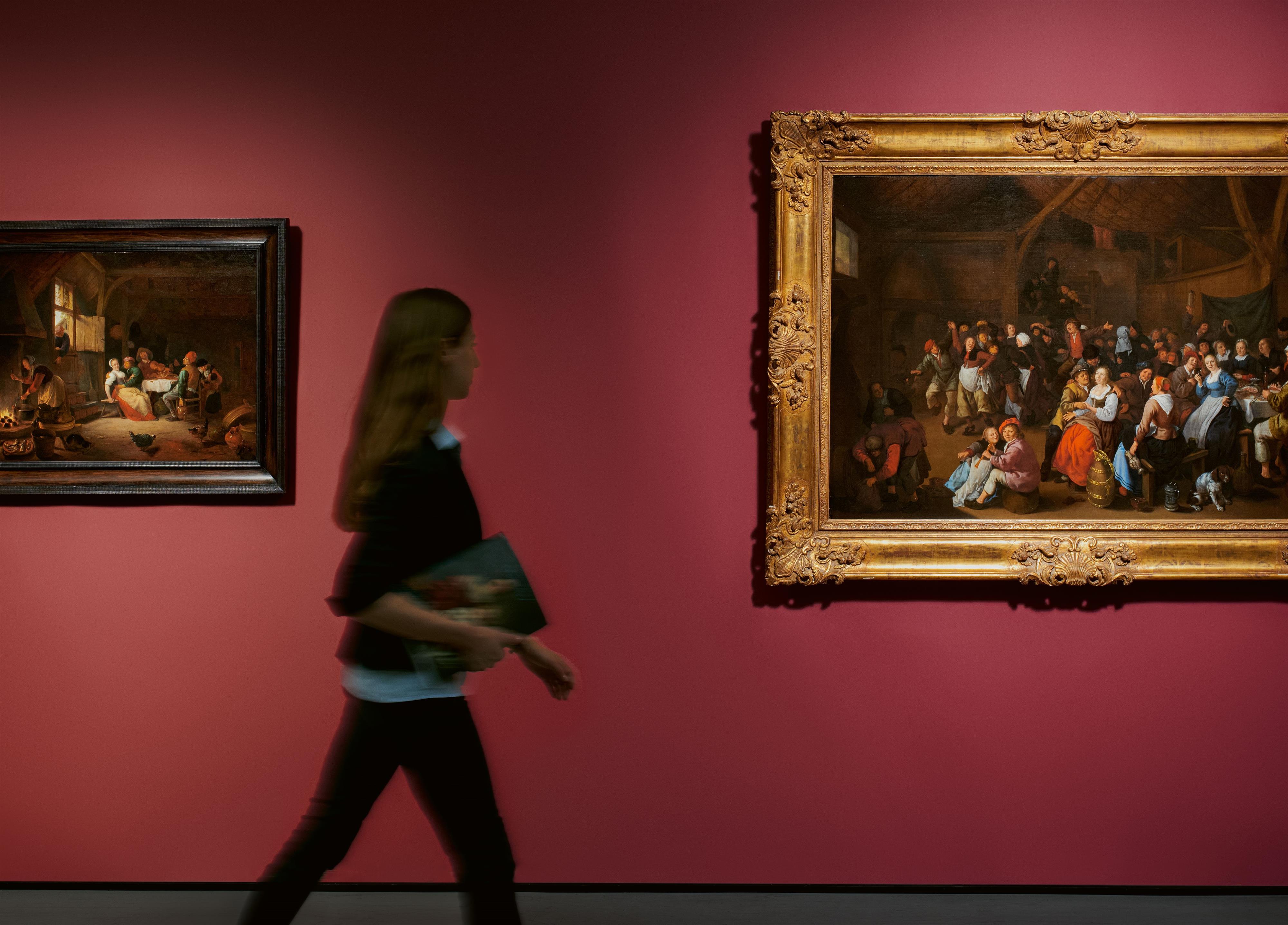Jan Miense Molenaer
Peasant Wedding Feast
Oil on canvas (relined). 93 x 133 cm.
Monogrammed lower right on the leather bag: JM (conjoined).
In this important and finely painted peasant wedding scene, Jan Miense Molenaer introduces us to a joyful festive party gathered in a barn. Nearly four dozen villagers are shown exuberantly celebrating the event with food, drink, music and dancing. The bride is seated at the far right of a table in front of an unfurled wedding shawl, while the groom, as in most 17th-century Dutch depictions, is not precisely identifiable - he may be the merry drinker at the right end of the table raising his glass, or he may have mingled with the dancing crowd. The bride wears her hair loose and adorned with a bridal crown, as does the young woman next to her, who may be one of the bridesmaids. Her stiff pose corresponds to the prevailing custom of the time: the bride had to remain seated throughout the ceremony, motionless and with her hands folded. She was also not allowed to eat anything.
The Peasant Wedding is the first in a series of later works by Jan Miense Molenaer that continue the Haarlem tradition of peasant depictions as initiated by Adriaen Brouwer and Adriaen van Ostade. To be dated around 1659-60 (see Weller 1992, p. 171), it is stylistically closely related to two important works by Molenaer, a village tavern scene of 1659 in the Staatliche Museen zu Berlin (fig. 1) and a similarly large-scale peasant company of 1662 in the Museum of Fine Arts, Boston. During this brief period, Molenaer created some of his best and most ambitious paintings despite misfortune in his personal life, namely his own illness and the death of his wife Judith Leyster. All three paintings share many motifs and architectural details. The cheerfully turbulent scenery bears the same treatment of light, passages in bold colours highlighted against more monochrome backgrounds, and contrasts between smooth and rough brushwork.
Peasant festival scenes like the present work are full of moral allusions and warnings to the viewer. The latter is invited to make eye contact by numerous figures looking directly out of the picture. The entire scene can be understood as a depiction of licentiousness: the flute in the hand of the boy in the right foreground (fig. 2), for example, is an allusion to the wedding night that follows the feast. Various vices are depicted: there is copious drinking, eating, and philandering. As a warning against excessive behaviour that can lead to harm, in the background of the painting hangs a painting of a monkey holding a cat's paw into a fire. Molenaer took this motif from a contemporary emblem book (see Weller, 1992, p. 173, ill.), in the tradition of Pieter Bruegel the Elder, in whose "revival" the Haarlem artist participated. Thus he quotes one of Breugel's dancing couples from his 1566 Wedding Dance (The Detroit Institute of Arts) in the mid-ground on the left. The figure of a man looking backwards over his shoulder at his partner with the white bonnet is also comparable.
Abb. 1 / Ill. 1
Jan Miense Molenaer, Die Dorfschänke / The Village Inn, 1659, Berlin, Staatliche Museen zu Berlin, Gemäldegalerie, ident. no. 949.
@
Abb. 2 / Ill. 2
Jan Miense Molenaer, Bauernhochzeit / Peasant Wedding Feast, Detail / detail.
Provenance
Continental private collection.
Literature
Dennis Weller: Jan Miense Molenaer (c. 1609/1610-1668): the life and art of a seventeenth-century Dutch painter, Ann Arbor, 1992, pp. 199, 490, fig. 79. - Edwin Buijsen: “Marcus Gheeraerts (1521-ca. 1604)”, Delineavit et Sculpsit 17 (1997), pp. 57-58.
Exhibitions
Music & Painting in the Golden Age, Hoogsteder & Hoogsteder, 11 May – 10 July 1994, Hessenhuis Antwerp , 29th July – 30th October 1994, pp. 242-247, no. 28. - Jan Miense Molenaer, Painter of the Dutch Golden Age, North Carolina Museum of Art, Raleigh, North Carolina, 13th October 2002 – 5th January 2003, Indianapolis Museum of Art, Columbus, Indiana, 25th January 2003 – 16th March 2003, The Currier Museum of Art, Manchester, New Hampshire, 6th April 2003 – 17th June 2003, p. 23, p. 42, pp. 171-173 no. 35 (ill.).- Rembrandt & Saskia, liefde in de Gouden Eeuw / Kassel…verliebt in Saskia, Liebe und Ehe in Rembrandts Zeit, Fries Museum, Leeuwarden, 24th November 2018-17 March 2019 und Museumlandschaft Hessen Kassel, Gemäldegalerie Alte Meister, 12th April 2019-11th August 2019, p.3 and p.79. - Music & Dance in the Golden Age of Dutch Painting, Polk Museum of Art, Lakeland, Florida, USA, 8th February – 4th November 2020.






